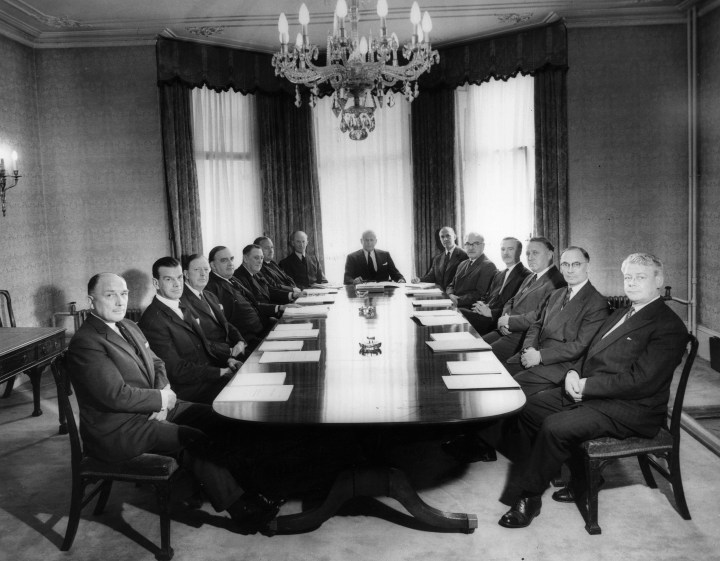
What is the difference between a president and a CEO?

This is just one of the stories from our “I’ve Always Wondered” series, where we tackle all of your questions about the world of business, no matter how big or small. Ever wondered if recycling is worth it? Or how store brands stack up against name brands? Check out more from the series here.
Listener Genji Fujimori-Smith asks:
What is the difference between president and CEO in a company?
CEOs hold the highest title at the company, responsible for its overall strategy, with the president second in command.
But every organization is different — the structure of the executive leadership team at a company will vary, with the same person sometimes occupying both the title of CEO and president.
“The CEO, COO, president [and] chairman of the board all kind of get smushed together in a title soup. And you see multiple combinations of those four titles across companies,” according to Jan Koors, senior managing director at Pearl Meyer, an executive compensation consulting firm.
Or, she added, even within companies throughout their history.
Koors said the structure of the company will vary from company to company, and may depend on the number of employees they have to manage and the complexity of the company’s operations.
Key differences between CEO and president
“The CEO is responsible for all the company’s successes and failures, share price [and] profitability,” according to Christopher Kayes, a management professor at the George Washington University School of Business. “The CEO decides the strategic direction of the organization.”
Typically, a CEO’s main job is to get capital infusions into the company. “So they’re working with capital markets, they’re working with investors, they’re working with shareholders,” he said.
Kayes added when a CEO appoints a president, that person is often tasked with executing the CEO’s vision and focusing more on day-to-day operations.
Jan Koors of Pearl Meyer pointed out that at many companies, the president has become the functional equivalent of the Chief Operating Officer, which is also a job title that also may entail handling day-to-day tasks.
CEOs are also almost always members of the board, while presidents might not be, Koors said.
This is a big rule of thumb, but generally, you might see a 15% pay difference between the CEO and president, Koors said.
Presidents/COOs will typically be in charge of “back-office responsibilities,” with the finance, IT and legal departments reporting to them. Meanwhile, CEOs are more likely to be charged with leading client-facing departments, like sales and product development, according to Koors. (Although she added that sometimes these responsibilities may be reversed.)
Different types of company presidents
Oftentimes, there will be a division between CEO and president at companies in the oil and gas industry or companies that specialize in consumer products. Basically businesses that have “multiple operating divisions or are geographically dispersed,” Kayes said.
“So you might see, for example, in an oil and gas company: ‘President of North American operations’ or ‘President of European operations,’” Kayes said. “The presidential title within the company represents that this person is responsible for a particular segment of the marketplace.”
At the consumer food company General Mills, for example, there are several presidents who are in charge of segments like “North America Retail,” “North America Foodservice” and the “Pet” category.
Kayes said that having one or more presidents at a company allows responsibilities to be spread out more and can also serve as a retention and attraction tool because of the title’s cachet.
However, Kayes said one of the disadvantages is that it can add “layers of bureaucracy” at an organization, making it “difficult to coordinate.”
What happens if the top executive is both president and CEO?
Sometimes the presidential title might not exist at a company or one individual may have both titles.
Kayes noted that tech companies in particular may forgo presidential titles. Andy Jassy, for example, is now CEO and president of Amazon.com, after founding and leading Amazon Web Services.
“I think that’s because tech companies are trying to show they’re streamlined,” Kayes said. “They’re trying to show that they’re more efficient, that they don’t have layers of hierarchy.”
Kayes said people used to want to be called president, which he’s seen some shift away from.
“Executives like two things: They like high compensation and they like prestige. So the term ‘president’ brought a sense of prestige,” Kayes said. “But now the trend is I think the other way. The trend is to be called a CEO. It has more prestige, and I think that’s because people have realized that the CEO is really the final arbiter, the final word of the company.”
Koors said one of the advantages of having the same person occupy both roles is that it doesn’t create confusion about who’s really in charge.
“There’s no question as to where the buck stops,” Koors said.
Kayes noted that one another phenomenon we’re seeing is that sometimes the CEO will remove themselves from that position to become what’s called executive chairman, which is what Jeff Bezos did at Amazon.
Executive chairmen, usually former CEOs, stay on to pass their “institutional knowledge and expertise on to the current one,” according to Hunt Club, a recruiting firm. “Many CEOs feel that their organizations need their long-term leader’s expert guiding hand before that CEO rides off into the sunset.”
There’s a lot happening in the world. Through it all, Marketplace is here for you.
You rely on Marketplace to break down the world’s events and tell you how it affects you in a fact-based, approachable way. We rely on your financial support to keep making that possible.
Your donation today powers the independent journalism that you rely on. For just $5/month, you can help sustain Marketplace so we can keep reporting on the things that matter to you.


















